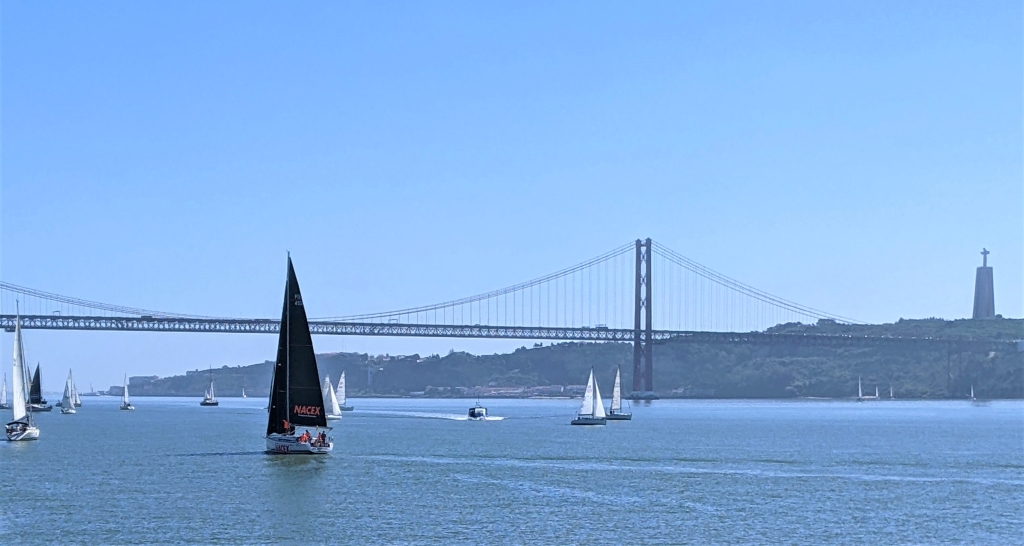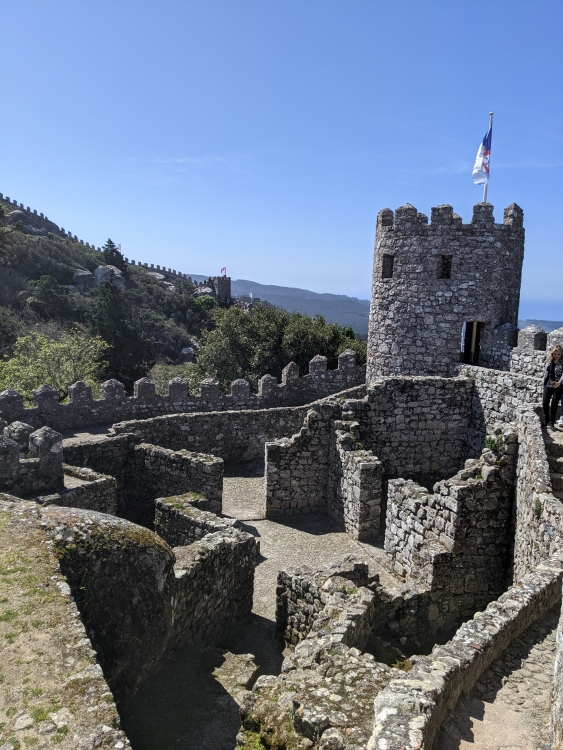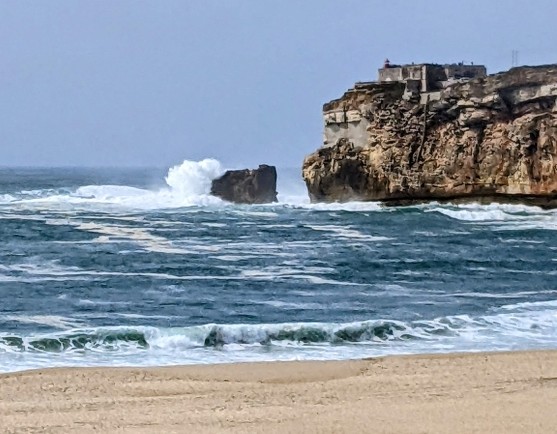
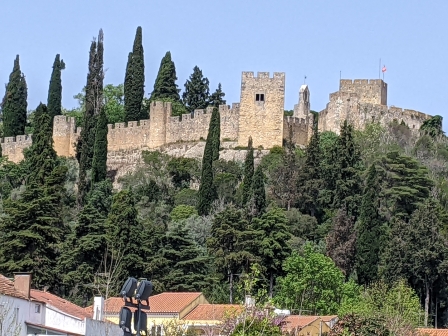
While sitting at the kitchen table with my lap top on a cold Oklahoma Panhandle morning in mid-March, JoDon asked what I was doing. My reply, “booking us tickets to Portugal.” The next week we departed with little, to no planning. The only preparation we did before our departure was to book a Lisbon apartment for five nights. After that, we would just figure it out.
You can travel the world (and we have) and arguably not find a better travel destination than Portugal. The medieval castles, cobblestone villages, captivating cities, stunning beaches are part of the Portugal experience. Its history, great food, and idyllic scenery are just the beginning.
You can travel the world (and we have) and arguably not find a better travel destination than Portugal. The medieval castles, cobblestone villages, captivating cities, stunning beaches are part of the Portugal experience. Its history, great food, and idyllic scenery are just the beginning.
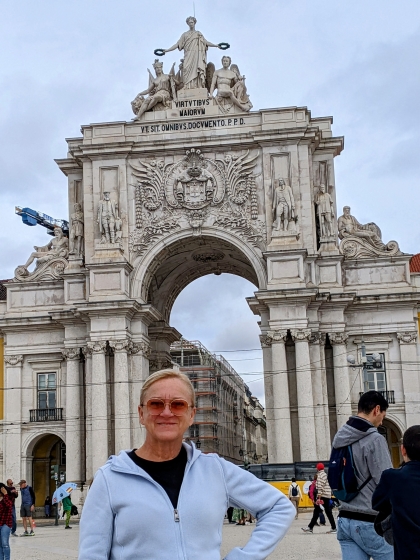
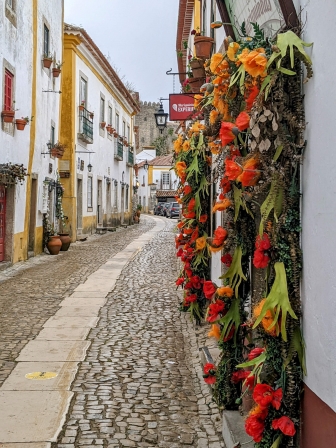
PORTUGAL
March/April 2023
March/April 2023
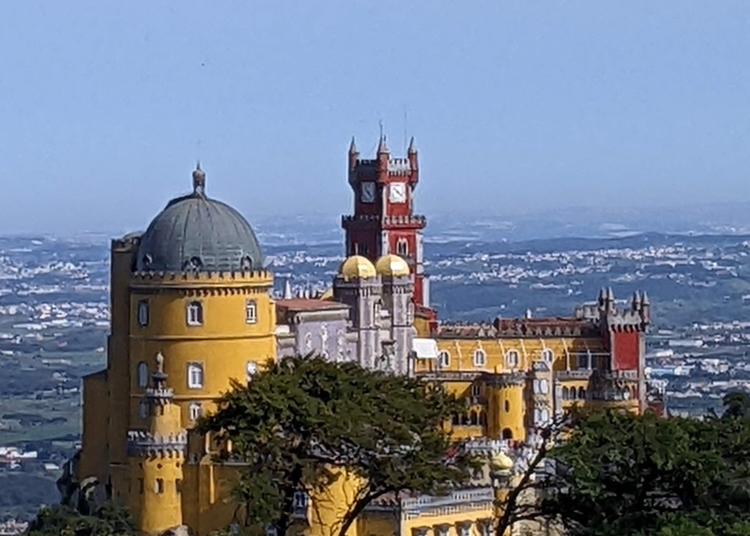
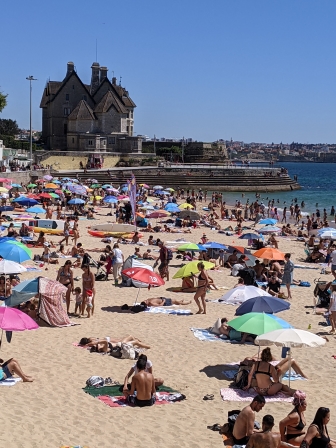
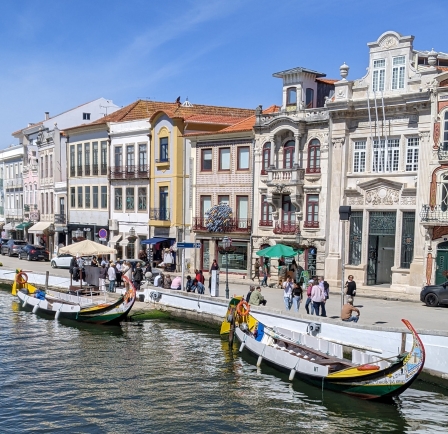
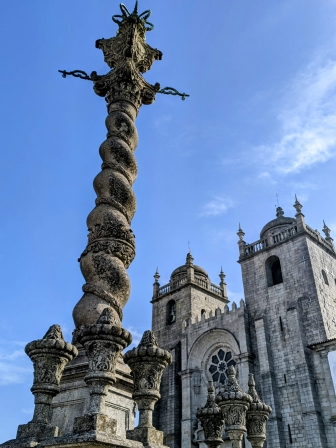
I (Brian) first visited Portugal in 1975. At that time, you could see fisherman row out to sea, set their nets at night and the next day sturdy women on the beach would pull in the nets. Oxen were used to launch and retrieve the boats to/from the ocean. Spoiler alert: this no longer exists. A lot of fishing and a little tourism has been replaced with a lot of tourism and a little fishing (now done in large trawlers). Portuguese eat a lot of seafood, especially bacalao (cod).
The natural beauty of Portugal is supplemented by the storybook hilltop castles and massive Catholic cathedrals throughout the country. The Portuguese are known to be some of the most friendly and helpful in the world. Maybe because the weather is so mild and pleasant? During our 30-day tour of Portugal we did not encounter any scary people and Portugal is listed as one of the safest countries in the world.
The natural beauty of Portugal is supplemented by the storybook hilltop castles and massive Catholic cathedrals throughout the country. The Portuguese are known to be some of the most friendly and helpful in the world. Maybe because the weather is so mild and pleasant? During our 30-day tour of Portugal we did not encounter any scary people and Portugal is listed as one of the safest countries in the world.
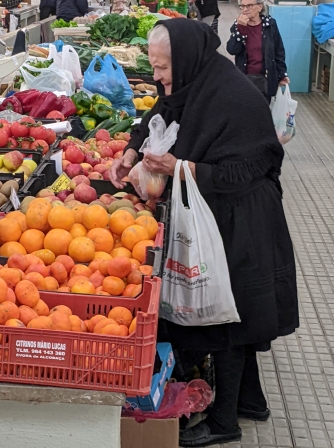
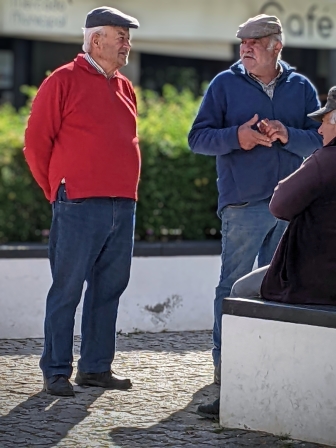
ABOVE: Former fishing net hauler picking out fruit in traditional widow's dress.
LEFT: Local Sunday morning sidewalk chat.
LEFT: Local Sunday morning sidewalk chat.
Portuguese is the native language and surprisingly there are 250 million Portuguese speakers worldwide. Countries in which Portuguese is the official language: Portugal, Angola, Cape Verde, Guinea-Bissau, Mozambique, São Tomé and Príncipe, Brazil, and Timor-Leste. Spain is the only country that borders Portugal but it is hard to find anyone that speaks Spanish; English is their preferred second language. Although their words are spelled like Spanish words, the pronunciation is totally different. I can read about 19 of 20 written words but understand only 1 of 20 spoken words.
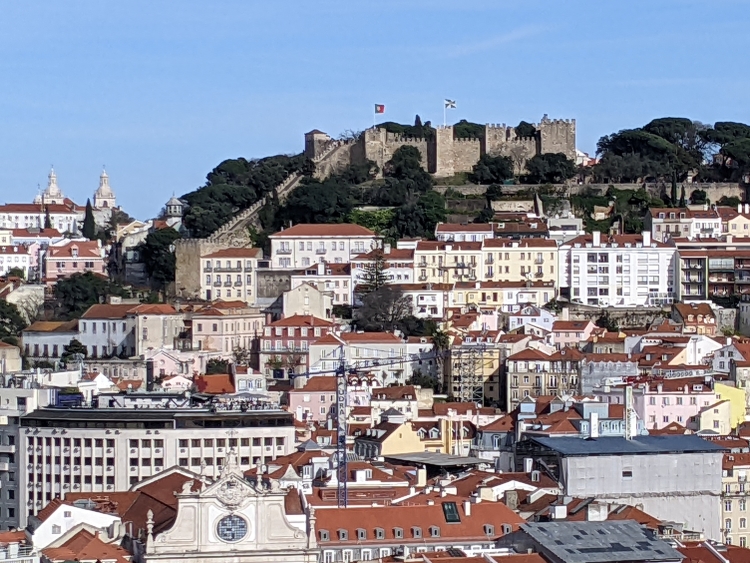
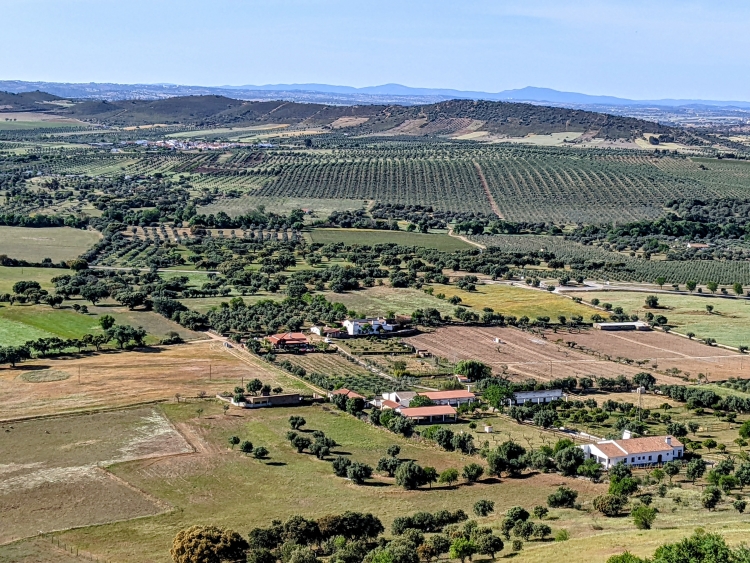
Although a small country, Portugal was one of the most powerful countries in the world from the 1400’s to the 1800’s due to their maritime expertise. The Portugal empire spread from Brazil, Africa, India, Malaysia, and China. Then it quickly collapsed and it became the North Korea of Europe from the 1940’s-1975. How could that happen? A VERY brief history of Portugal:
Portugal is located (along with Spain) on the Iberian Peninsula but it also includes the archipelagos of Azores and Madeira. Its territory has been continuously settled, invaded, and fought over since prehistoric times. Phoenicians sailed to present day Lisbon, later the Carthaginians. The Romans invaded Iberia around 200 BC but it took them almost 200 years to conquer all the tribes. The Roman influence is easily seen with the aqueducts, worship sites, statuary and city walls that still exist.
The Moors (Arabs from N. Africa) invaded Portugal in the 8th century and lasted 400 years. Their architecture and language are a legacy.
An independent kingdom since 1143, Portugal is one of the oldest nations in Europe. The former world power during the 15th and 16th centuries lost much of its wealth and status with the destruction of Lisbon in a 1755 earthquake, the occupation during the Napoleonic Wars, and the independence in 1822 of Brazil as a colony. A 1910 revolution deposed the monarchy; for the next 60 years repressive governments ran the country. In 1974, a left-wing military coup installed democratic reforms. The following year Portugal granted independence to all its African colonies. Almost 2 million people then left Africa and made Portugal their new home.
Portugal is located (along with Spain) on the Iberian Peninsula but it also includes the archipelagos of Azores and Madeira. Its territory has been continuously settled, invaded, and fought over since prehistoric times. Phoenicians sailed to present day Lisbon, later the Carthaginians. The Romans invaded Iberia around 200 BC but it took them almost 200 years to conquer all the tribes. The Roman influence is easily seen with the aqueducts, worship sites, statuary and city walls that still exist.
The Moors (Arabs from N. Africa) invaded Portugal in the 8th century and lasted 400 years. Their architecture and language are a legacy.
An independent kingdom since 1143, Portugal is one of the oldest nations in Europe. The former world power during the 15th and 16th centuries lost much of its wealth and status with the destruction of Lisbon in a 1755 earthquake, the occupation during the Napoleonic Wars, and the independence in 1822 of Brazil as a colony. A 1910 revolution deposed the monarchy; for the next 60 years repressive governments ran the country. In 1974, a left-wing military coup installed democratic reforms. The following year Portugal granted independence to all its African colonies. Almost 2 million people then left Africa and made Portugal their new home.
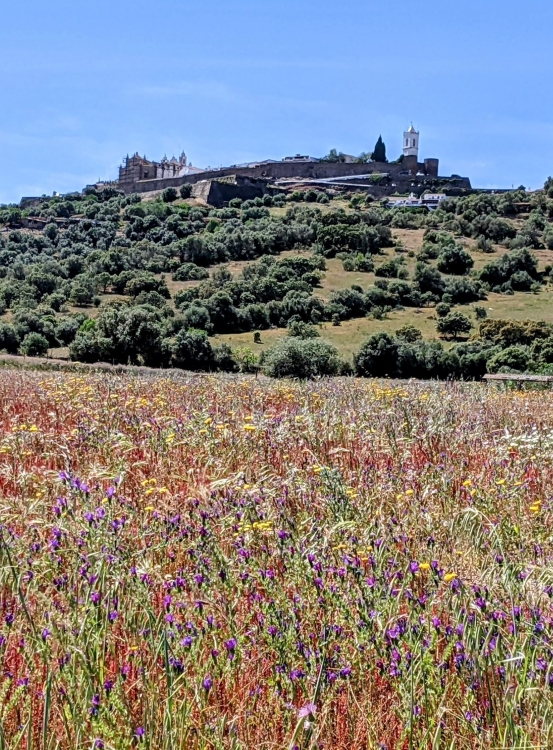
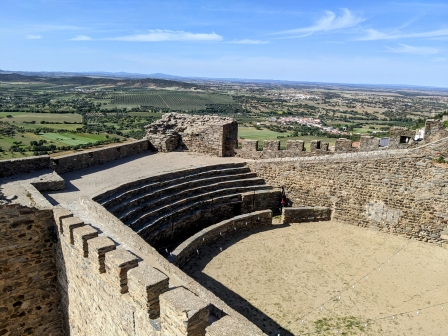
Lisbon is the capital and the most popular tourist destination. Its seven hillsides overlooking the Rio Tejo cradle Lisbon's postcard-perfect panorama of cobbled alleyways, ancient ruins, and white-domed cathedrals. If Lisbon reminds you of San Francisco, it should! Lisbon has a bridge that was designed by the same engineers as the Golden Gate Bridge and its cable cars were of American design. In recent years, locals nicknamed their cable cars, “Americanos.”
Lisbon is a modern, clean metropolitan with plenty to see and do. The metro (subway) system is excellent. Our preferred transportation in a city is to walk but we also used the bus, cable cars, trains, and funiculars. Walking is made interesting with the black and white patterned streets and sidewalks throughout Portugal called ‘calçada portuguesa’ or ‘Portuguese pavement.’ There is no limit to imagination of the designs and shapes seen. One of the most dramatic we saw was a large plaza that looked like the ocean. It almost made you dizzy to walk across.
Lisbon is a modern, clean metropolitan with plenty to see and do. The metro (subway) system is excellent. Our preferred transportation in a city is to walk but we also used the bus, cable cars, trains, and funiculars. Walking is made interesting with the black and white patterned streets and sidewalks throughout Portugal called ‘calçada portuguesa’ or ‘Portuguese pavement.’ There is no limit to imagination of the designs and shapes seen. One of the most dramatic we saw was a large plaza that looked like the ocean. It almost made you dizzy to walk across.
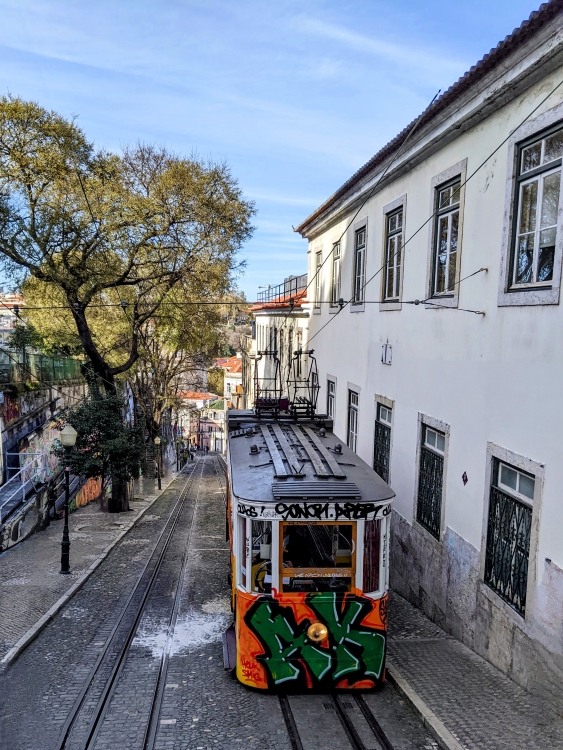
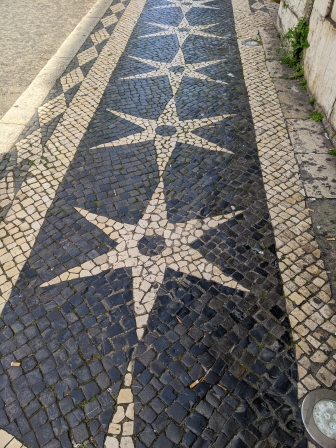
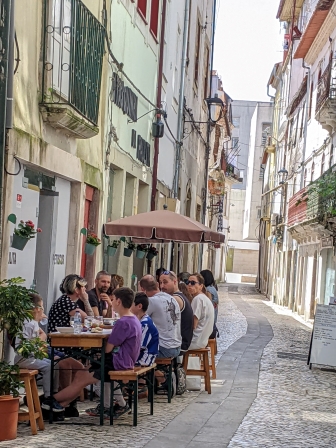
In our opinion, many tourists make the mistake of only visiting Lisbon and the surrounding attractions. There is so much more: the beaches of Nazaré (home of HBO’s documentary ‘100 Foot Wave’), the northern city of Porto (2,000-year history and home of port wine), the SW region of Évora with Roman influences, and medieval castles on almost all steep hills throughout the country.
Getting around Portugal is incredibly easy using public transportation. Trains (when they are not on strike) span the country and the bus system is modern, efficient and on-time. We use the ‘Rome2Rio’ website to find the best routes.
Getting around Portugal is incredibly easy using public transportation. Trains (when they are not on strike) span the country and the bus system is modern, efficient and on-time. We use the ‘Rome2Rio’ website to find the best routes.
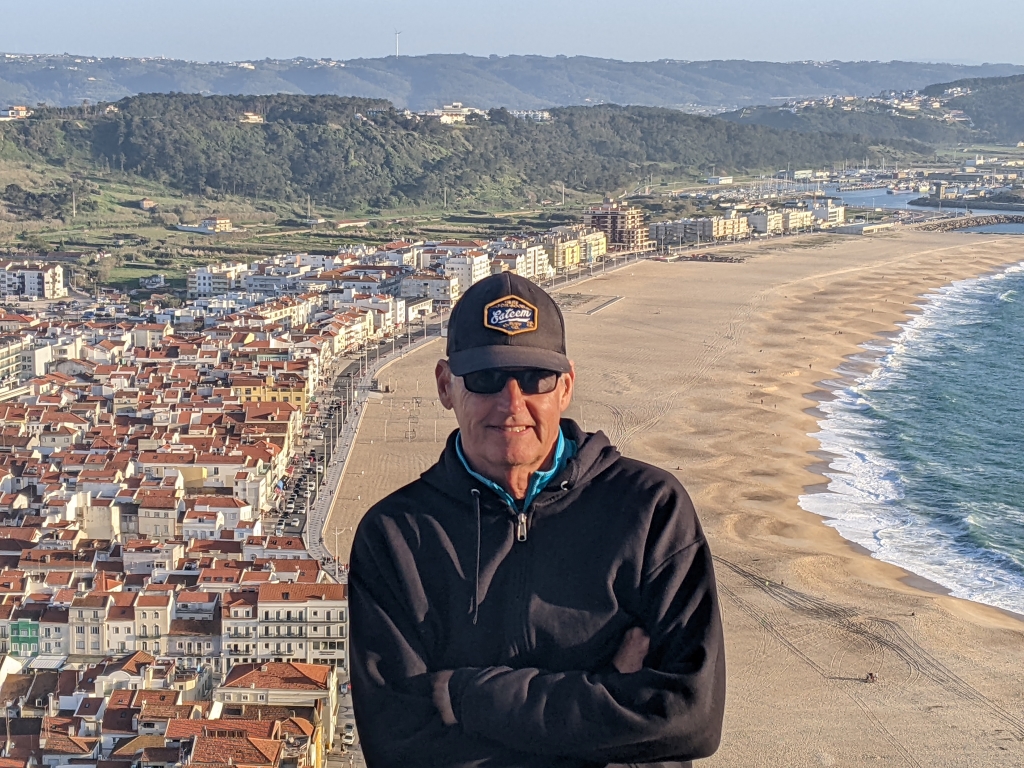
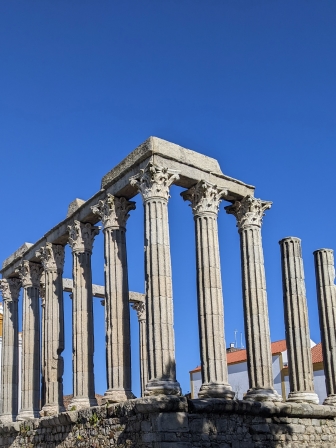
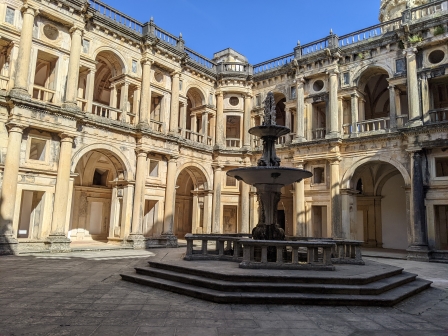
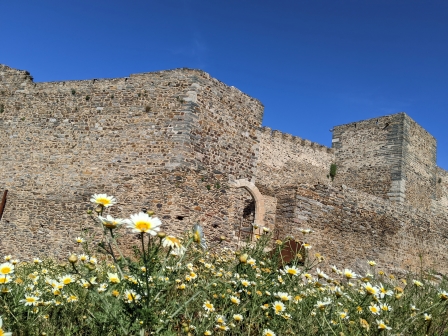
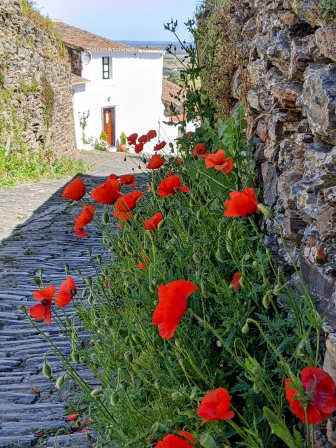
An advantage of a 30-day trip is the luxury of not having to rush from one site to another. Our most enjoyable moments of traveling are the early mornings and evenings after the buses of tourists have departed. We spent the first five nights in Portugal in Lisbon and almost all other places were 2-3 nights. It is fun to get to know the culture and people, and the only way to do that is to slow down and not be in a rush.
Throughout Portugal are beautiful catholic cathedrals that are gilded in gold in the Baroque style. These opulent churches were created beginning in the 14th century when Portugal was one of the richest and most powerful countries in the world. Families would donate to the church to demonstrate their Christian devotion. Personally, I find these golden alters to be rather disgusting. In my opinion, the money could have been better spent helping the poor. So, I look at any alter that does not charge an admission fee. One of our trip highlights was attending a free small concert inside a golden chapel. The music and the setting were magnificent.
Throughout Portugal are beautiful catholic cathedrals that are gilded in gold in the Baroque style. These opulent churches were created beginning in the 14th century when Portugal was one of the richest and most powerful countries in the world. Families would donate to the church to demonstrate their Christian devotion. Personally, I find these golden alters to be rather disgusting. In my opinion, the money could have been better spent helping the poor. So, I look at any alter that does not charge an admission fee. One of our trip highlights was attending a free small concert inside a golden chapel. The music and the setting were magnificent.
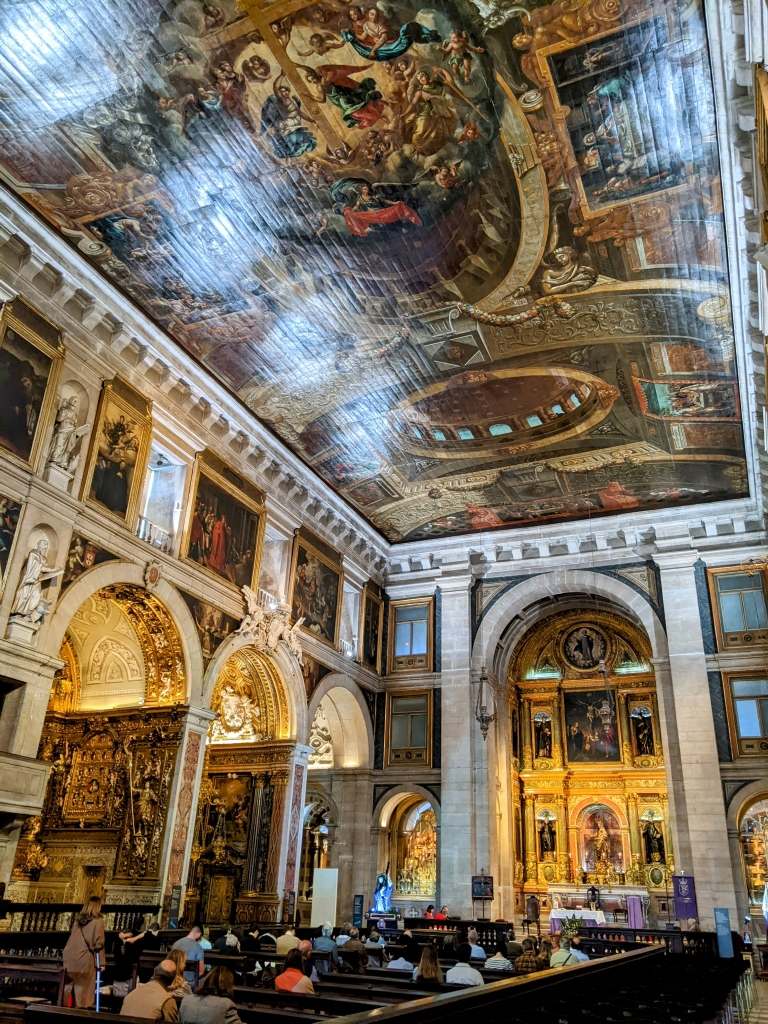
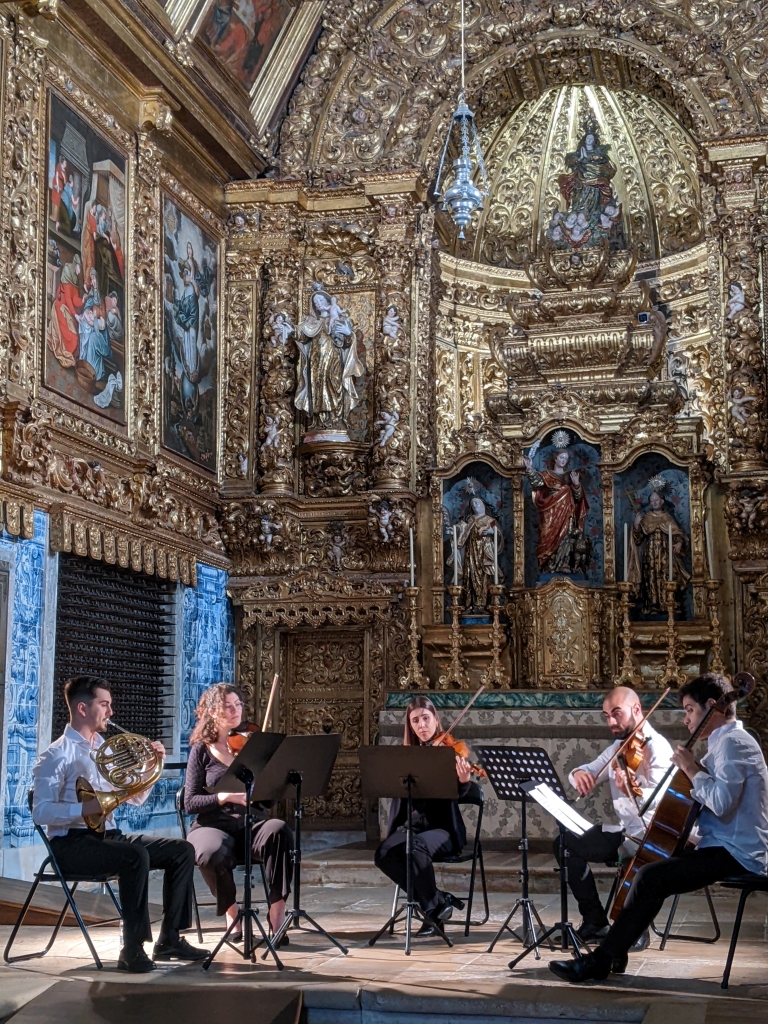
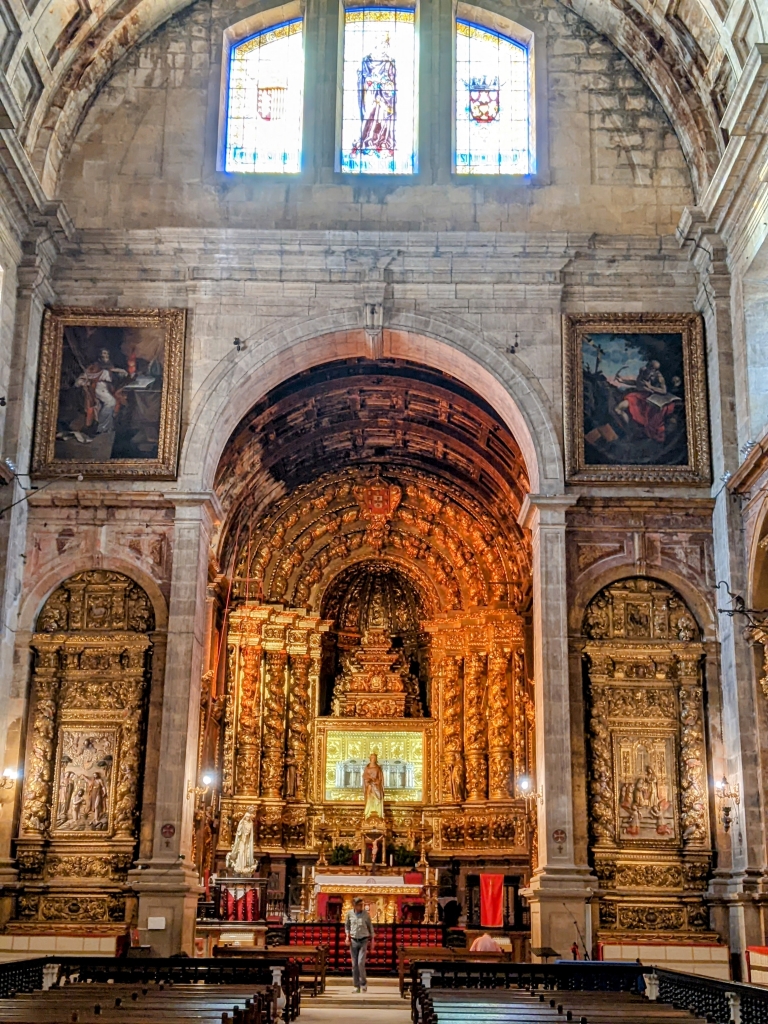
Popular food and drinks: the national drink is ginjinha (ZEEN-zeen-ya). Ginjinha is very strong alcohol that has been infused with bitter cherries, sugar, and cinnamon. Although served in shot glasses, it is meant to be sipped and locals will sip it throughout the day. The most popular treat is pastel de nata. Legend is nuns would use egg whites as a starch for their hobbits. With the leftover egg yolks, they developed small custards as snacks. Fish is very popular followed by pork. JoDon and I normally share a meal at a restaurant but while in Évora we indulged in a gourmet meal. The menu (chef decides, women choose the wine, men pay the bill) consisted of turkey giblets, mushrooms, salad, pastry w brie cheese, prosciutto, honeydew, garlic bread w lard, local red wine, beef tongue slider w cuddle fish & garlic, veal cheek, migas (day old bread mixed w spinach to form a moist molded form), sweet potato, veggies w eggs, pork neck, mint sherbet, fresh pineapple w cinnamon, almond marmalade, and almond cake. Wow!! Too much but everything was delicious!
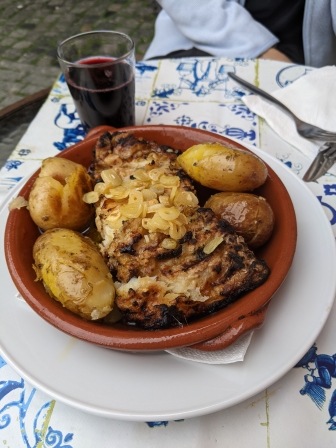
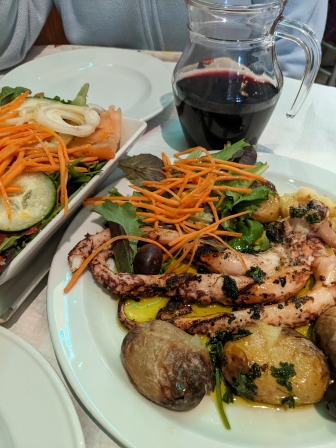
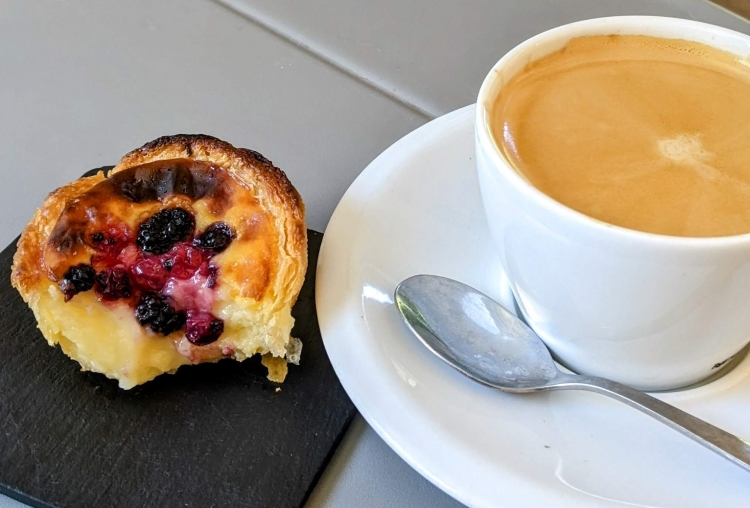
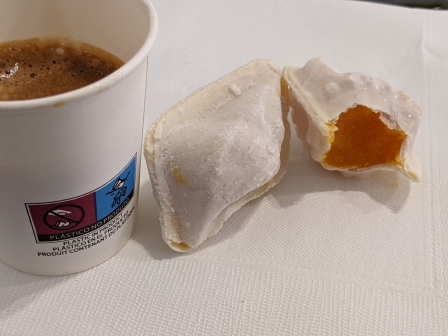
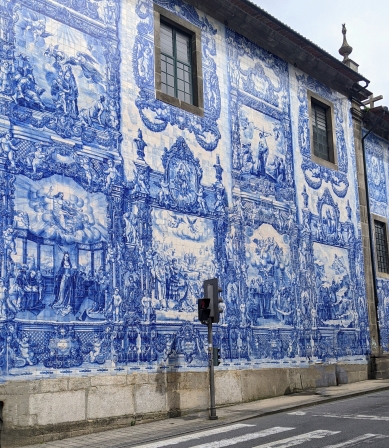
Portugal is famous for many things including their blue tiles (azuleros) seen on homes and buildings throughout the country. An assumption is blue (azul) is the reason for the name but the term azulejo comes from the Arabic word azzelij, meaning “little polished stone.” The tilework dates to the 13th century, in the period just after the Moors invaded Portugal.
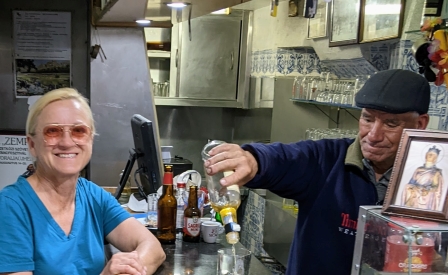
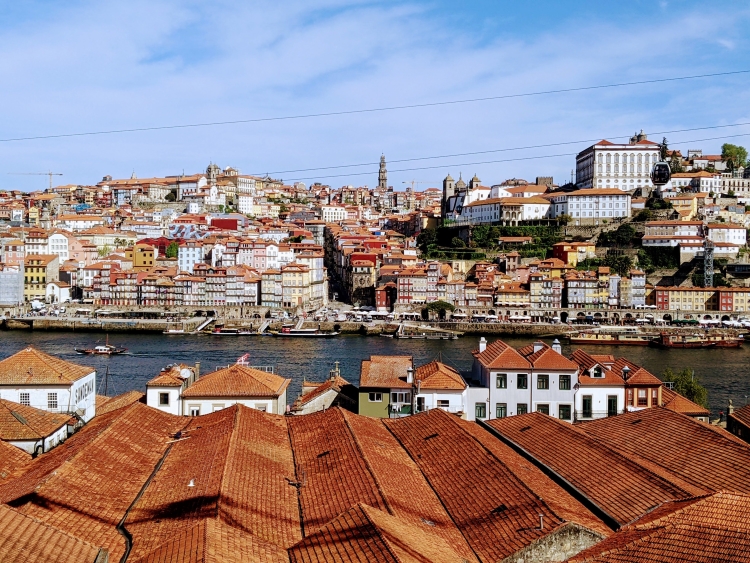
Porto, the 2nd largest city in Portugal located in the northern portion of the country, was our surprise. It has so many things to offer but without the big city hustle of Lisbon. It was in the Porto and the North regions that Portugal was founded in the 12th century. Porto is famous for port wine, a sweet wine made from the grapes from the nearby Douro valley but there is plenty to see and do within the city.
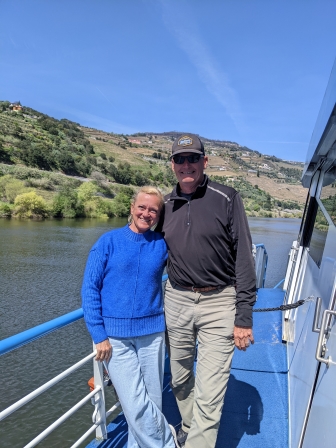
The small city of Fátima, Portugal has a fascinating story, regardless of your religion or beliefs. Fátima has a huge plaza that includes a sanctuary that can hold 6,000 believers and a 100-yard mat so that pilgrims can crawl on their knees as a sign of their devotion and penitence. The reason behind these pilgrimages is that in 1917 three young shepherds, cousins age 7, 8 & 9, claimed to be visited by the Virgin Mary. The three testified they saw the Virgin six times over six months. The three young children were harassed by family and the community and were ultimately jailed for making false statements. The Virgin told the three children three secrets that were withheld from the public. In the 1940’s the first two secrets were revealed by the Vatican: World War I would soon end and there would be a WWII (the rise and fall of communism/Christianity in Russia). In May, 2000 the Vatican announced the third original vision by the Virgin, the 1981 attempted assassination of Pope Paul II. Pope Paul credited this prediction in saving his life. But the story continues. Pope Paul II donated the bullet that struck him to Fátima, but what to do with it? Well, during the early 1940’s the women of Portugal donated gold and jewels to Fátima as a token of appreciation that Portugal was not involved in WWII (Portugal remained neutral). The collected treasures were made into a crown and by coincidence (?) there was a small hole left in the top of the crown that the assassins bullet fit perfectly. The crown, with the assassin’s bullet, can now be seen in the Fátima museum.
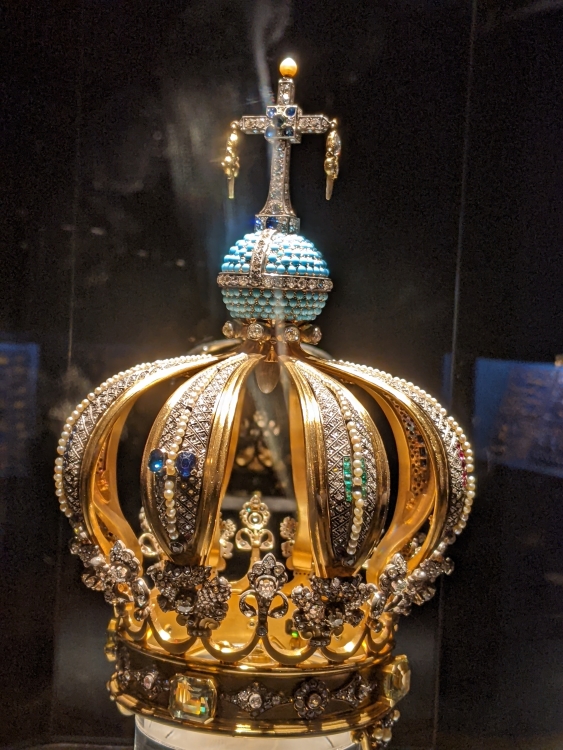
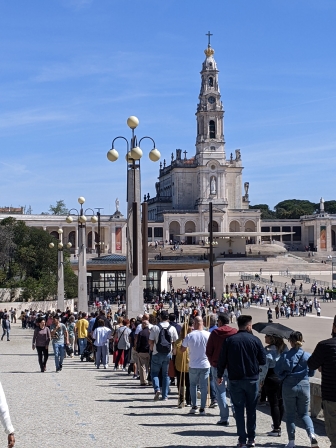
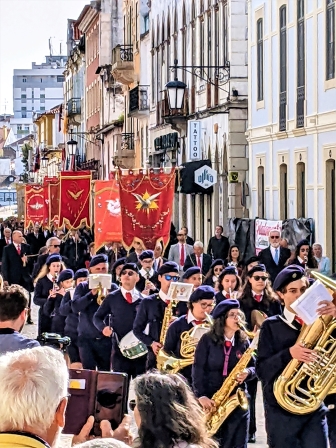
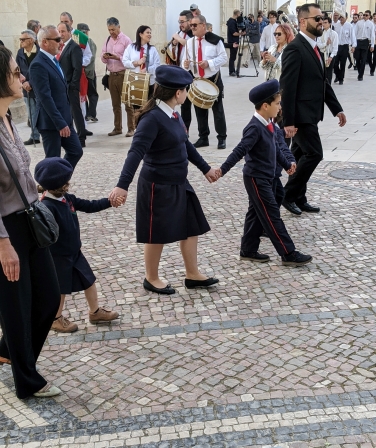
We spent Easter in Tomar which is home to the Templar Knight’s castle that construction began in year 1160. That is a long time ago! The castle was originally built to repel neighboring Moors (Arabs). During the crusades the Templars became arguably the first multi-national company in the world. Christian knights traveling to the Middle East needed a way to finance their trips since getting robbed in the long journey was a great risk. Many knights would deposit their inheritances with the Templars and then retrieve their money at numerous cities along the way. One catch: if you were killed during the crusade, which was highly likely, the Templar Knights kept your money. Tough luck!
Today Tomar is a quaint city that we were blessed to spend Easter Sunday. There were numerous long processions that included marching bands and local dignitaries displaying religious artifacts. We had fun watching the small children participate in the parades.
Today Tomar is a quaint city that we were blessed to spend Easter Sunday. There were numerous long processions that included marching bands and local dignitaries displaying religious artifacts. We had fun watching the small children participate in the parades.
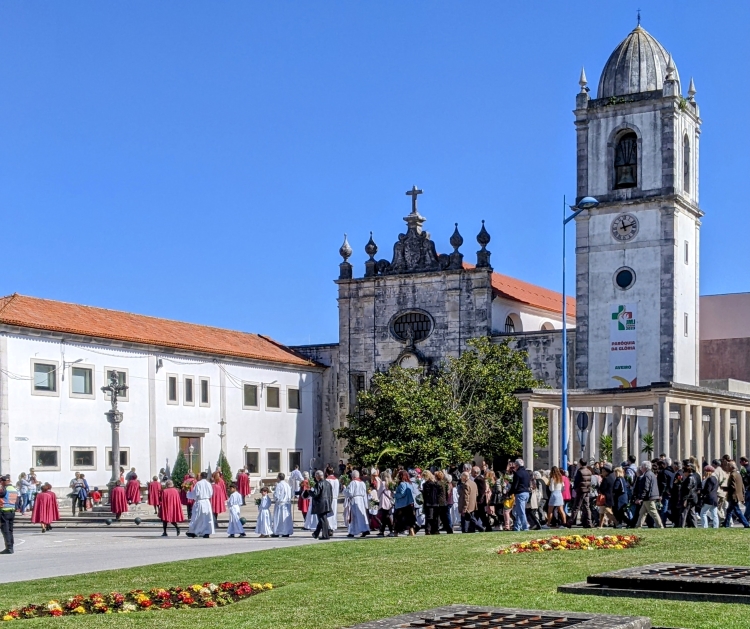
To the west of Lisbon is the Évora region that is known for its Roman architecture and statuary that is abundantly found throughout the region. The Romans occupied Portugal from 200BC to 400AD. The Roman influence is easily seen in aqueducts, city walls and religious sites that remain intact. As too often stated, “Amazing.”
This region is now home to giant corporate farms growing wine grapes, peaches, cherries, etc. Although the farming is vast and huge, it is very sparsely populated; it must be like the Central Valley of California in the 1950’s.
This region is now home to giant corporate farms growing wine grapes, peaches, cherries, etc. Although the farming is vast and huge, it is very sparsely populated; it must be like the Central Valley of California in the 1950’s.
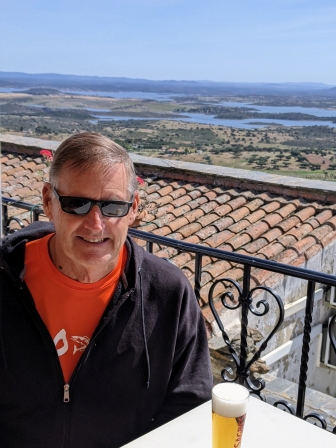
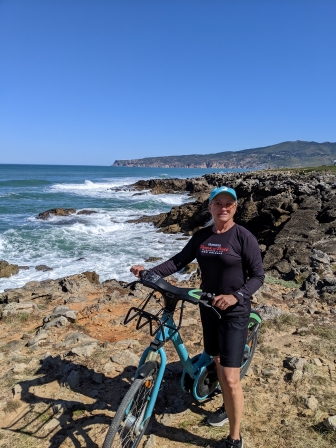
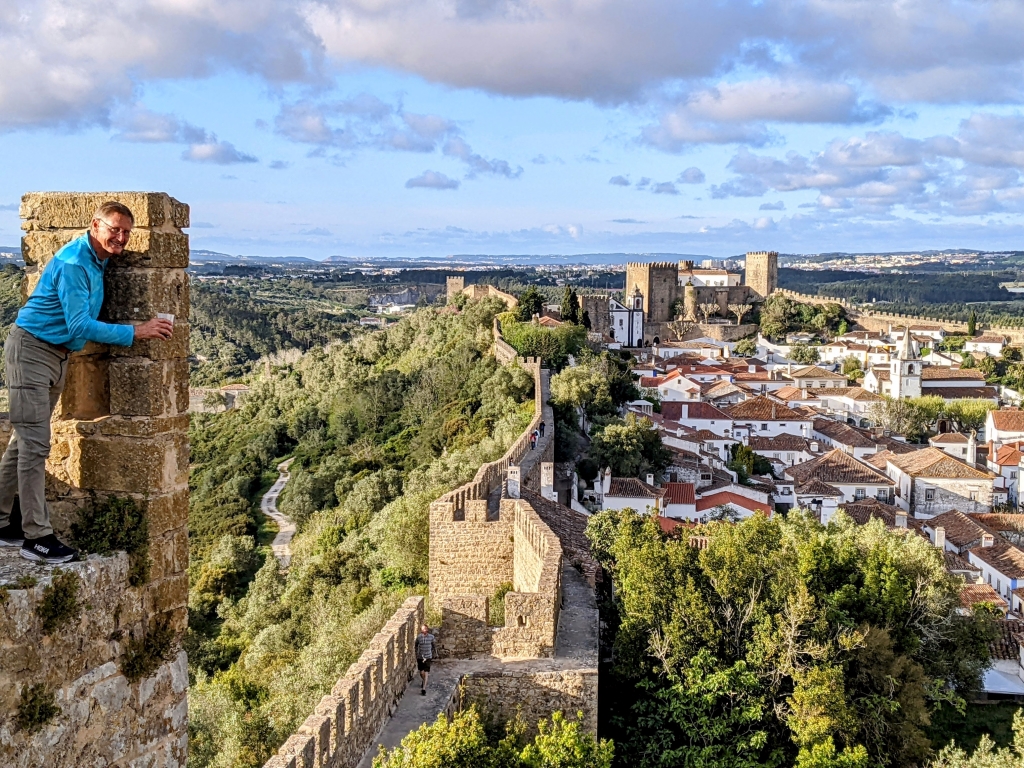
Toward the end of our 30-day Portugal stay we decided to take a vacation from our vacation and go back to the port city of Cascais. On our maiden voyage sailing our charter boat, Breezin, from France to the British Virgin Islands we made a brief stop in Cascais and fell in love with it. That was in November so there were few tourists and the beaches were empty. In April it is the opposite but still very relaxing and enjoyable.
Portugal should be a sought-after destination for everyone that would like to see a diverse slice of Europe in a compact country.
Até a próxima vez,
Brian and JoDon
Portugal should be a sought-after destination for everyone that would like to see a diverse slice of Europe in a compact country.
Até a próxima vez,
Brian and JoDon
A great castle/town to visit (and there are many) is Óbidos. Most of the small hotels are located within the original walls and it’s fairy-tale character. The walls have no guard rails or safety structures so its highly recommended to stroll the walls before happy hour.
